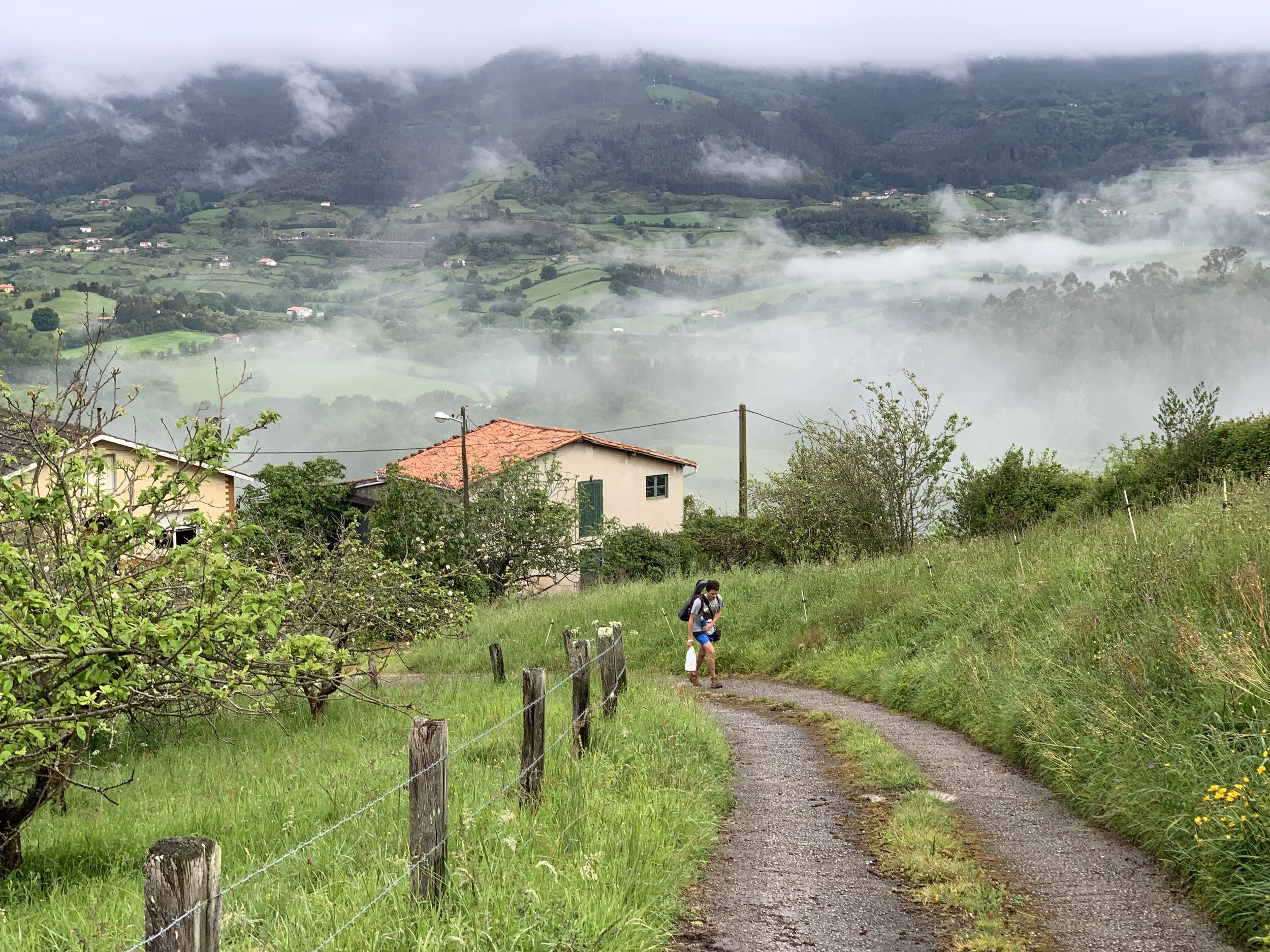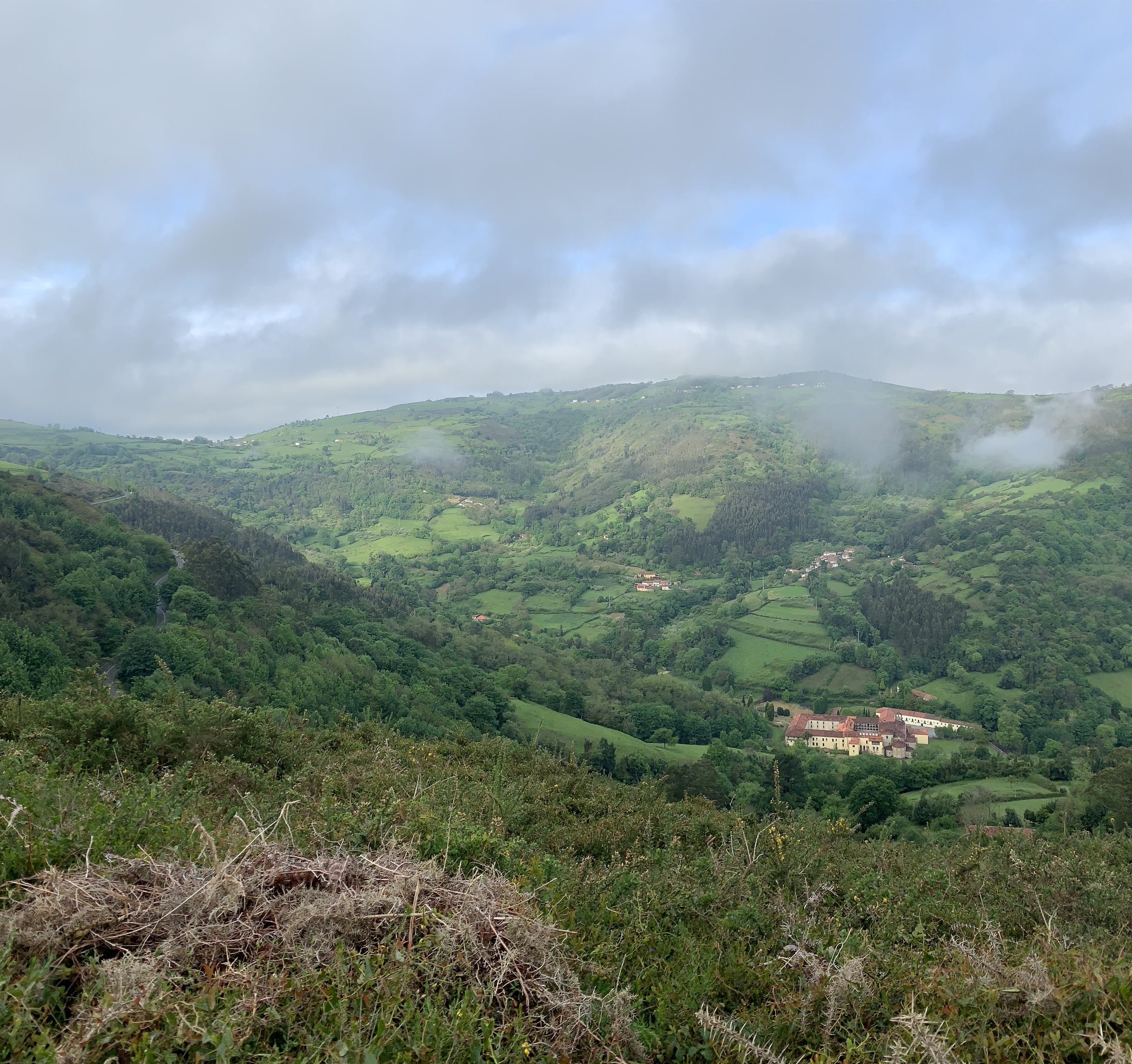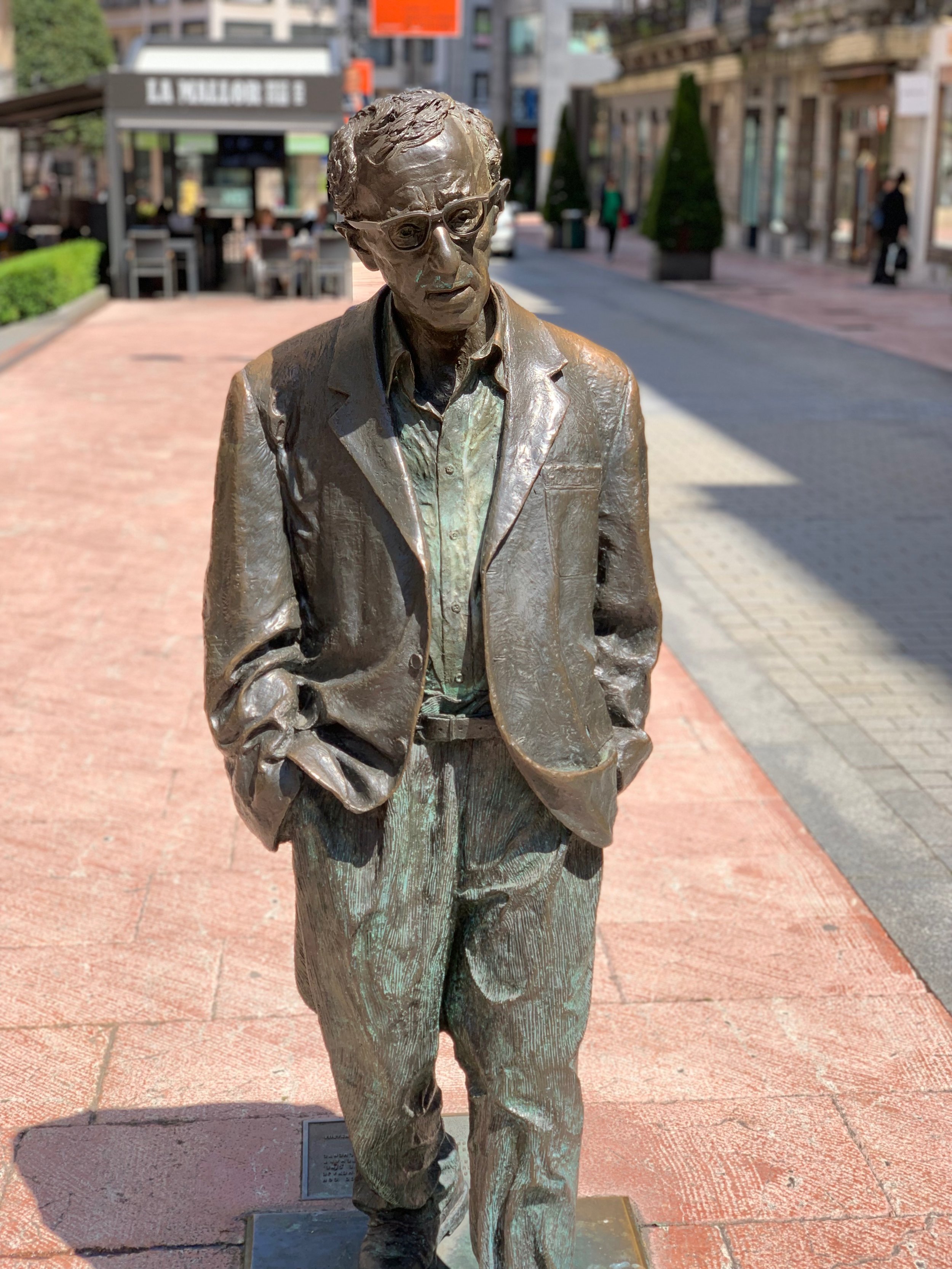Starting the Camino Primitivo
Each pilgrim who walks El Camino del Norte eventually has s decision to make when they leave the town of Villaviciosa. Walk straight and you continue on the Norte. Take a left and make your way to the beginning of the Camino Primitivo. I turned left.
The Camino Primitivo gets its name because the first pilgrim, King Alfonso II, walked this path to Santiago de Compestela in 814. It’s widely considered to be the most difficult Camino because of the mountainous terrain and long stretches with limited infrastructure. It takes about two weeks to complete, which makes it a pretty good option for pilgrims that don’t have the time to complete Camino Francés or Camino del Norte. The combination of the difficulty, beauty, and scarcity of pilgrims led me to divert to the Primitivo.
The starting point of the Primitivo is the Cathedral in Oviedo, and it takes about two days to walk from the Norte to the Primitivo. The Primitivo merges with Camino Francés in Melide for the final two stages to Santiago. Most of the pilgrims I had been walking with also decided they were up for the challenge of the Primitivo.
The stage taking me to Oviedo was a mere 17 km, which meant I had a full day to explore the city. Anja and I also managed to score a 4-star hotel in Oviedo for very cheap. It was a nice luxury for a couple of weary pilgrims and it also meant we didn’t have to wait 3 or 4 hours for the municipal albergue to open in order to drop our bags.
While I had no real sightseeing goals for Oviedo, I did notice there were a ton of of interesting statues around the city. I spotted two Boteros.
I snapped a quick selfie with Argentinian comic strip superstar, Mafalda.
Woody Allen (Cancelled!!!!) Apparently I’m not the only one who wants this statue taken down, Vicky Christina Barcelona be damned.
After Gijon, Oviedo is the largest city in the principality of Asturia. Among other things, Asturia is famous for its alcoholic-apple drink called Sidra. Sidra has very little carbonation, so in order to further carbonate it, you have to pour it from a high distance. Traditionally people would pour a shot-sized amount into a glass, take a drink, and then pass the bottle. You’re also meant to toss the last bit of sediment out before each pour. Oviedo even has a “Sidra Row” of sidrerias.
One of the chores I needed to figure out in Oviedo was how to fix my necklace filled with some of my Mom’s ashes. I had kept it hidden in my bag the entire Camino because it was leaking and I didn’t need to wear a necklace that was leaking my mom’s remains onto my shirt. I found a local jewelry store and asked the woman if she could fix it. I explained to her what it was in Spanish (“Este es mi mamá”) but had a harder time explaining what was wrong with it. She saw my earlier attempts to super glue it shut and assumed that it needed to be cleaned. An older man walked into the store and played the role of translator for me. The woman cleaned the necklace and glued the sides of the necklace and when I tried to pay her, she wouldn’t take my money.
When I woke up the next morning, I decided to take advantage of having a hotel room and get a later start than normal. To start the Camino Primitivo, I headed directly to the Cathedral. When I went inside a man greeted me and took my Pilgrim’s credential to the back of the Cathedral to stamp it. I put my bag down and kneeled at a pew. I’m not sure what I’m doing at these churches truly constitutes praying, but I used it as a moment to feel closer with my mom and hold her close to me. The man came back with my credential and I began the Camino Primitivo.
The first stage of the Primitivo is pretty quiet. I didn’t see too many pilgrims but that could also have been because of my late start. There was something familiar about the scenery on this part of the Camino. It felt like I was in Northern California. I might not be completely crazy because latitudinally this checks out. I stopped for a sensible mid-afternoon 2.60€ bottle of sidra. Some places will give you a machine to carbonate the sidra so you don’t have to try your luck pouring.
Only 5% of pilgrims embark on the Camino Primitivo, and it was clear very early on that the demographics of the Primitivo were different from what I was used to with the Norte. While the Norte was heavily German, the Primitivo was full of American and Italian pilgrims. It also seemed to skew heavily older and male.
The first day of the Primitivo ended for me in Grado. I arrived late but luckily there was still a bed available for me at the albergue. The hospitaleros were a very sweet elderly Dutch couple. They spotted me walking up the hill and were at the door ready to greet me. There seemed to be more Americans in this albergue than I had met in the preceding 3 weeks on el Camino del Norte (I had come to refer to this Camino as Camino Alemán or “The German Way”). Sadly no one was able to play the amazing Hannah Montana guitar.







































